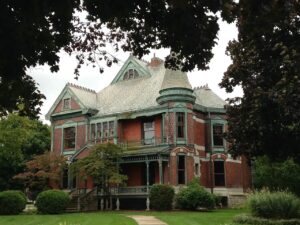Fort St. Joseph (Niles, Michigan)

History
Fort St. Joseph is a former mission, trading post and garrison built by the French in 1691. Located on the banks of the St. Joseph River, the post is near the present-day city of Niles. It remained under French rule until 1761, when the British took control following the Seven Years’ War. By the mid-18th century, the fort ranked fourth in volume of furs traded among all posts in la Nouvelle France. Its interpretation is vital for learning about the extensive trade networks and operations of New France.
About the Project
The City of Niles is seeking a grant in the amount of $5,000 to match funds for the conservation and display of iron hardware recovered from Fort St. Joseph, encompassing keys and escutcheons; strap hinges; hasp locks and padlocks; hinges and pintles; door, gate and shutter hooks; door latch bars; and lock bolts. The conserved artifacts will be displayed on a reproduction door built in the French Colonial style typical of the buildings that would have been found at Fort St. Joseph. The project will consist of three phases: artifact conservation, display, and exhibition.
Fort St. Joseph Today
Since 1998, the Fort St. Joseph Archaeological Project, a joint venture of the City of Niles, Western Michigan University and Support the Fort Inc., has conducted excavations at the site. No maps or plans of the fort are known to exist, and since few historical documents describe the post, artifacts recovered through archaeology are the main source of information in learning what it looked like. To date, six structures, each approximately 16 by 20 feet, have been identified as residences for fur traders. Evidence of structural stone and remains of wooden posts—both poteaux en terre (posts in ground) and poteaux sur sole (posts on sill)—suggests typical French colonial construction.
Restoration Project
Iron architectural conservation and display
Amount Awarded
$5,000
Grant Sponsor
Chicago-Midwest Chapter
Year
2025
